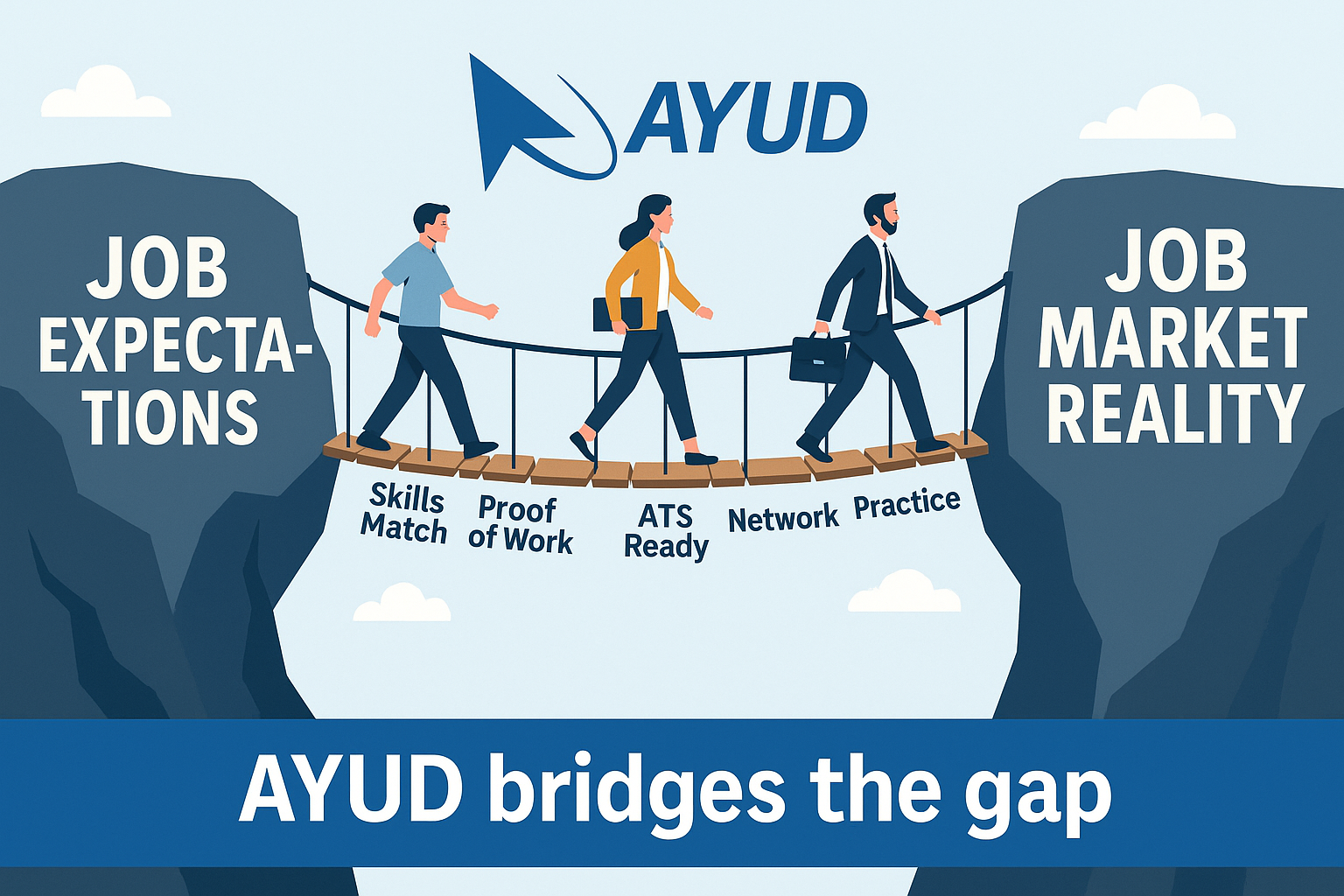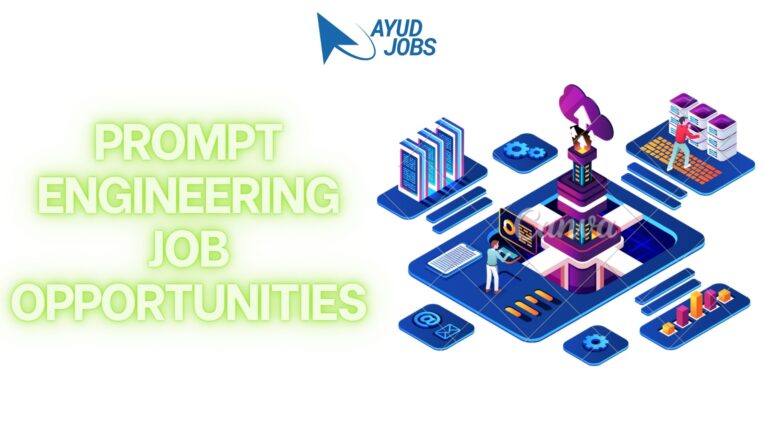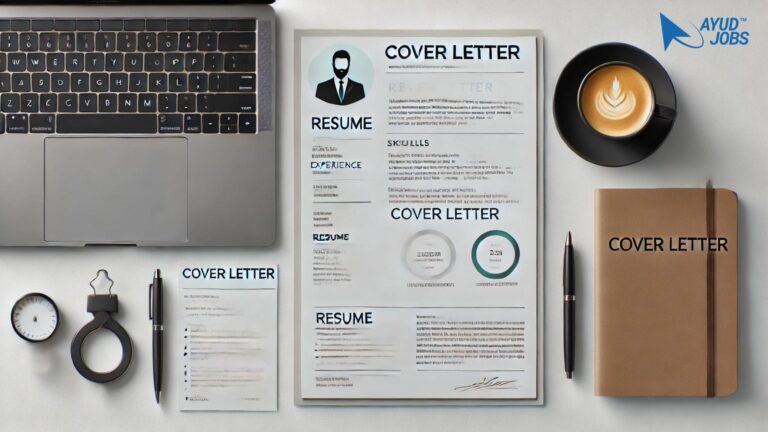Job Seekers Expectations vs Job Market Reality: How to Win the Battle
Job search feels hard because expectations often clash with reality. Yet you can win. You need a plan. You need skills that match demand. You must show proof of work. You must network with intent. And you must iterate fast. This guide explains how. It uses simple steps, clear examples, and a real story of a 6-week turnaround. Job Seekers Expectations vs Job Market Reality: How to Win the Battle.
Why Expectations Clash with Reality
Many job seekers expect quick results. We all do. However, the market works differently.
-
You expect a perfect resume to get many calls. But recruiters want role-specific skills.
-
You expect your degree to be enough. Yet hiring teams ask for proof.
-
You expect HR to reply to every application. Instead, ATS filters and time limits block replies.
-
You expect interviews to be theory only. In reality, most rounds test practical work.
So, Job Seekers Expectations vs Job Market Reality: How to Win the Battle the gap widens. Still, you can bridge it. Let’s break it down.
Expectation vs Reality: 10 Common Gaps (And What to Do)
1) “One Resume Will Fit All” vs “Custom Resumes Win”
Many use one resume for every role. But each job needs specific skills.
Do this: Tailor your summary, skills, and bullet points to the job post. Use keywords from the JD. Keep it one page if you’re a fresher; two pages if you have rich, recent impact.
2) “A Degree Guarantees a Job” vs “Skills and Proof Matter More”
Degrees open doors. However, skills keep them open.
Do this: Build small projects. Share links. Show demos. Use GitHub, a portfolio site, or even a Google Drive link with clear structure.
3) “Job Titles Must Match” vs “Skills Transfer Across Titles”
Titles change across firms. Roles evolve fast.
Do this: Map your skills to related titles. For example, “Data Analyst” skills also map to “Business Analyst” or “Operations Analyst” with minor changes.
4) “Interviews Test Only Theory” vs “Practical Rounds Are Common”
You may face assignments, cases, or presentations.
Do this: Practice live tasks. Time yourself. Refine your work and be ready to explain your process.
5) “HR Will Reply to Every Application” vs “Follow-ups and Referrals Help”
Recruiters handle many roles at once.
Do this: Send polite follow-ups. Request referrals. Ask alumni for advice, not jobs. Later, ask for a referral if they agree your fit is strong.
6) “Salary Jumps Happen Fast” vs “Pay Follows Impact”
Companies pay for outcomes.
Do this: Track your work in numbers. Use metrics like revenue impact, efficiency, quality, or speed. Put these numbers in your bullet points.
7) “Networking Is Optional” vs “Networking Finds Hidden Jobs”
Many jobs are never posted.
Do this: Message five people a day. Share a short note, a sample of your work, or a smart question. Keep it human and specific.
8) “ATS Reads Every Word” vs “ATS Skims Structure and Keywords”
Applicant Tracking Systems scan for relevance.
Do this: Use simple formatting. Clear headings. Job-specific keywords. Avoid tables and fancy designs that confuse parsers.
9) “Portfolios Are Only for Designers” vs “Portfolios Work for Everyone”
Portfolios show proof.
Do this: Add case studies, reports, dashboards, code, campaign snapshots, SOPs, or checklists. One page per project. Include your role, steps, and results.
10) “Soft Skills Don’t Matter” vs “Communication Wins Offers”
Hiring managers want teammates who can explain work.
Do this: Practice brief answers. Use simple language. Structure your thoughts with “Problem → Actions → Results.”
The Market Today: What It Actually Wants
Yes, the market shifts. Still, some truths hold.
-
Clear value: Employers want outcomes, not tasks.
-
Practical proof: They prefer demos over claims.
-
Speed: Teams want people who can deliver fast.
-
Learning: Managers value self-learners who improve weekly.
-
Fit: Culture and communication matter.
Therefore, align your plan with demand. Do it step by step.
Your Battle Plan: 10 Steps to Win Offers
Step 1: Map the Market
List 30 target companies and 5 roles for each. Then group by skills and tools. This shows the common skills to learn first.
Step 2: Match the Skills
Read 10 real job posts in detail. Write down the top 10 skills that repeat. Next, rank them by frequency. Begin with the top five.
Step 3: Build Proof of Work
Create three micro-projects. Keep them small and real. For example:
-
A mini dashboard from open data.
-
A short process doc that reduces errors.
-
A script or template that saves time.
Publish your work. Share clear links.
Step 4: Optimize Your Resume
Use strong verbs. Use numbers. Use keywords from each JD. Remove fluff. Shorten long lines. Keep it clean and ATS-friendly.
Step 5: Clean, Skimmable Formatting
Use standard fonts and clear headings. Avoid images in the resume body. Use one column. Use consistent dates. Triple-check spelling.
Step 6: Network with a Daily Habit
Reach out to five people daily. Start with alumni and mutual connections. Share your work. Ask for feedback first. Finally, ask for referrals if it feels right.
Step 7: Practice Interviews Like a Sport
Simulate HR, technical, case, and culture rounds. Record yourself. Time your answers. Learn from each session. Improve your weak areas each week.
Step 8: Show Outcomes, Not Activities
Write bullets like this:
“Cut processing time by 20% by streamlining Excel sheets and Python scripts.”
Numbers stand out. Results build trust.
Step 9: Follow Up Respectfully
Send a short thank-you note within 24 hours. Mention one thing you learned in the interview. Share a relevant link or idea if it adds value.
Step 10: Iterate Every Week
Track your applications, replies, and interviews. Review what works. Change your approach. Job search is a feedback loop, not a one-time push.
Fresher Playbook (Simple and Direct)
-
Pick one role (e.g., Data Analyst, QA, Sales, HR Ops).
-
Learn the top five tools or skills for that role.
-
Build three small projects.
-
Ask mentors for feedback.
-
Tailor each resume to each JD.
-
Practice interviews.
-
Apply with a strong, human note.
-
Follow up and refine weekly.
Fresher Proof Ideas
-
Data: Clean a small dataset and build a basic dashboard.
-
QA: Write a crisp test plan for a demo app.
-
Sales: Draft a cold email script and a simple pipeline tracker.
-
HR Ops: Create a structured onboarding checklist and a FAQ note.
Experienced Playbook (Leverage Your Impact)
-
Turn each past project into a one-page case study.
-
Highlight business outcomes, not only tasks.
-
Show leadership: coaching, process fixes, cross-team wins.
-
Quantify results: time saved, cost reduced, revenue increased, risk lowered.
-
Align your next move with a growth path, not just a title.
Experienced Proof Ideas
-
Before/After dashboards showing performance gains.
-
Process SOPs that cut errors or speed up delivery.
-
Architecture or workflow diagrams with short annotations.
-
A short Loom-style walkthrough of a tool you built.
The ATS Reality: How to Pass the First Gate
-
Keep formatting simple.
-
Use the exact job title in the top section where possible.
-
Mirror keywords from the JD.
-
Add a concise summary with your top three skills and two proof points.
-
Export to PDF unless the employer asks for DOCX.
-
Finally, test your resume in a free ATS checker if you have one.
Networking That Actually Works
Many people send “Hi” and wait. Instead, add value.
-
Refer to a recent post, talk, or product launch.
-
Share something useful, like a small analysis or mock design.
-
Ask for a 10-minute call for advice.
-
Keep your message short.
-
Respect their time.
-
Say thanks even if they say no.
-
Stay in touch with updates.
Over time, people remember. Therefore, doors open.
Interview Basics That Move the Needle
-
Prepare structured stories using STAR: Situation, Task, Action, Result.
-
Keep answers short.
-
Speak clearly.
-
Ask smart questions about goals, metrics, and team workflows.
-
If you do not know an answer, say so. Then think aloud and attempt a solution.
-
After the call, send a note with a key takeaway.
Salary Talks Without Stress
Yes, money matters. Still, timing matters more.
-
Research ranges on public sites and in your network.
-
Focus on role, learning, growth, and team quality.
-
Share your range when asked, with a calm tone.
-
Link pay to value.
-
If the offer is low, ask about growth plan, review cycle, or a skill-linked raise.
A Real Story: Aditi’s 6-Week Turnaround
Aditi finished a degree in commerce. She applied to many jobs. No replies came. She felt stuck. Then she changed her plan.
Week 1: She listed 25 companies that hire analysts. She rewrote her resume. She used the title “Business/Data Analyst (Fresher)” and added clear keywords.
Week 2: She built a small dashboard using open government data. She cleaned the data and wrote a short note on the findings. She posted the files and a quick screen-share video.
Week 3: She messaged 40 alumni and seniors. She asked for feedback. She got four short calls and two referrals.
Week 4: She did two mock interviews. She fixed long answers. She learned to show outcomes in numbers.
Week 5: She took a skills test and shared her portfolio link in new applications.
Week 6: She got two offers. She chose the one with a clear growth plan.
This is not magic. It is a system. She improved weekly. She showed proof. She respected the process. Consequently, the market responded. Job Seekers Expectations vs Job Market Reality: How to Win the Battle.
Common Mistakes (And How to Avoid Them)
-
Long resumes: Cut to the point.
-
Generic summaries: Write a role-specific, keyword-rich summary.
-
No proof: Add links, demos, or PDFs.
-
Zero follow-ups: Send a thank-you and one polite nudge.
-
Weak questions: Ask about goals and metrics.
-
No tracking: Use a simple sheet to track applications and outcomes.
Tools and Templates You Can Start With
-
A one-page resume template with clean headings.
-
A portfolio folder with three case studies.
-
A networking tracker with columns for “Name, Company, Note, Date, Next Step.”
-
A weekly review checklist: “What worked? What failed? What will I change next week?”
Final Word: Win With Proof, Focus, and Heart
The market rewards clarity, speed, and learning. You will face setbacks. Still, keep going. Use short feedback loops. Improve your profile weekly. Show the work. Ask for help. Help others. Eventually, you will win offers that fit you. Job Seekers Expectations vs Job Market Reality: How to Win the Battle.
#JobSearch #Freshers #ExperienceMatters #ResumeTips #ATS #InterviewPrep #Networking #Portfolio #CareerGrowth #SalaryTalks #ProofOfWork #Hiring #JobsInIndia #Kalaburagi #KalyanaKarnataka #AyudJobs #UdyogaMahotsav #RozgarMahotsav #SkillUp #ayud #ayudjobs #ayudfeatures
How to Use Ayud : A Comprehensive Guide
Join our what’s app channel for timely updates
Click here to install Ayud Jobs App from Playstore
https://ayudjobs.blog/mastering-negotiation-skills-preparation-effective-communication-and-finding-common-ground/








It is useful for everyone
Because for education of people